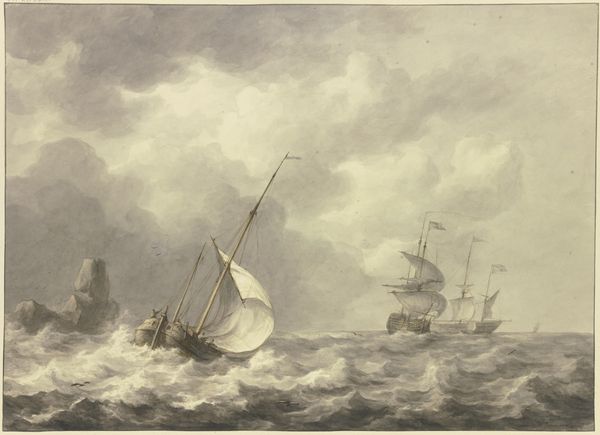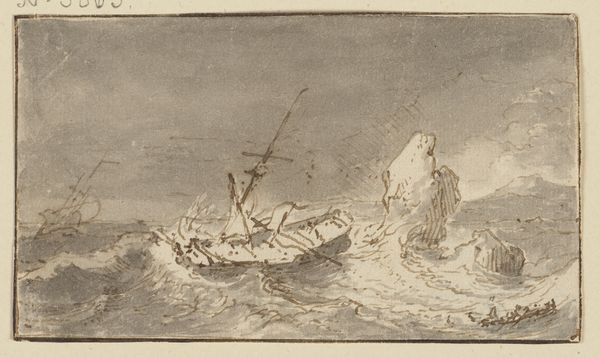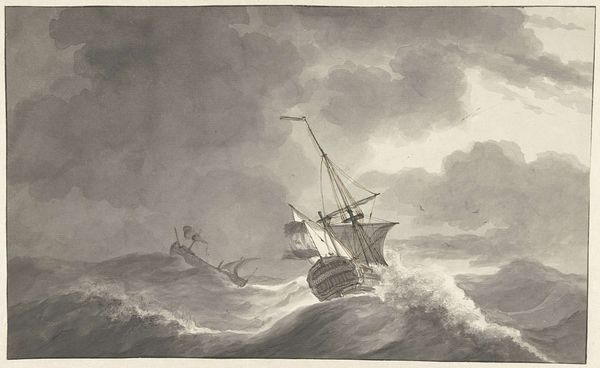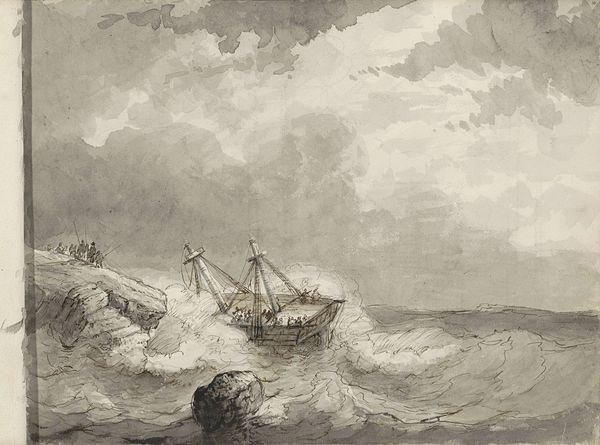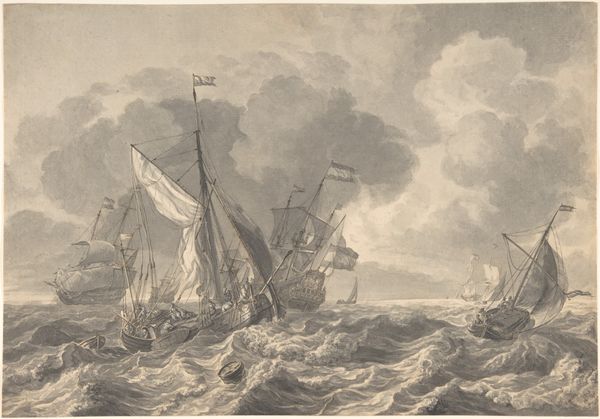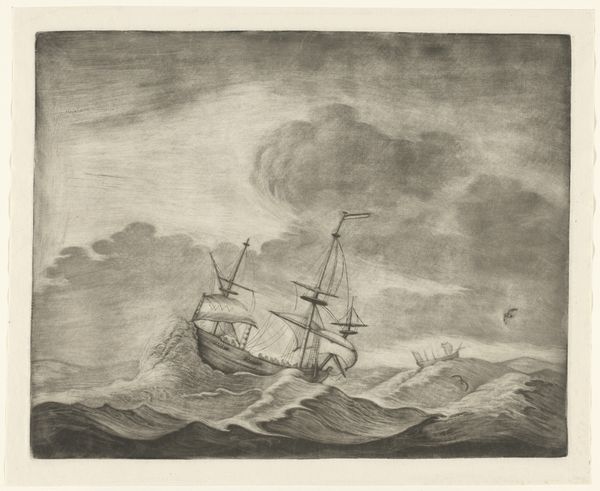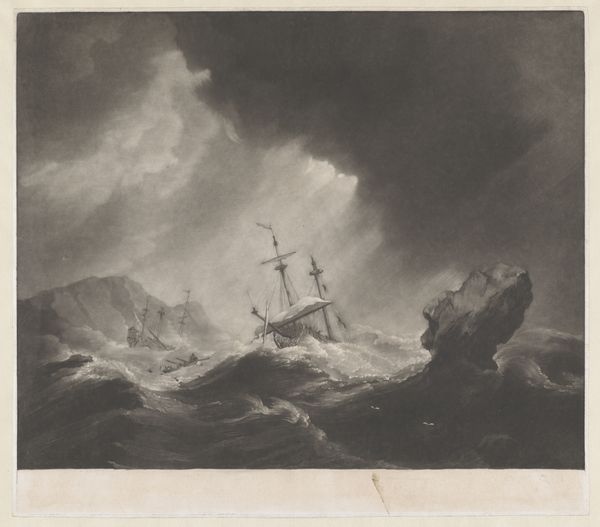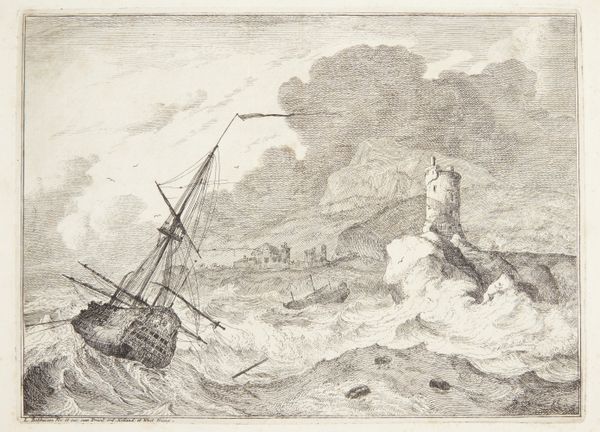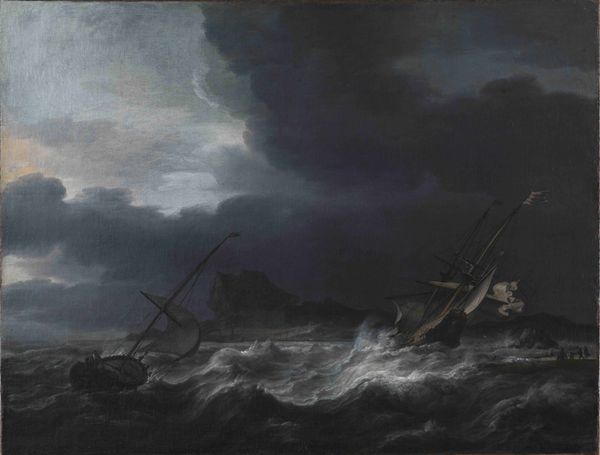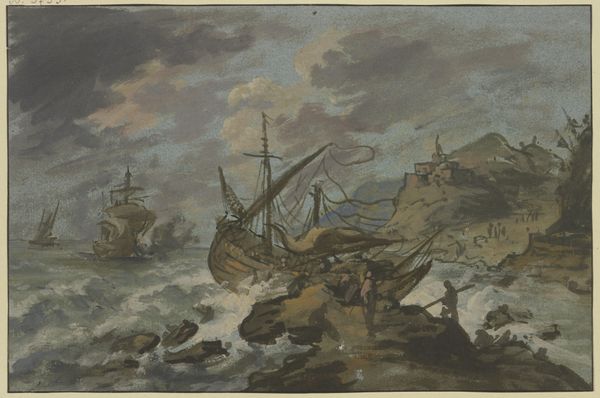
Seesturm, rechts ein entmastetes Schiff, links ein Felsen, an welchem ein Schiff vorbeisegelt
0:00
0:00
drawing, ink, graphite
#
drawing
#
netherlandish
#
landscape
#
ink
#
romanticism
#
15_18th-century
#
graphite
#
watercolor
Copyright: Public Domain
Curator: What a tempestuous scene. It almost feels like you can smell the salt water and feel the spray on your face. Editor: Indeed. This ink, graphite, and watercolor drawing, titled "Seesturm, rechts ein entmastetes Schiff, links ein Felsen, an welchem ein Schiff vorbeisegelt"—quite a mouthful—is attributed to Hendrik Kobell. It's part of the Städel Museum collection. Look at the fury of the storm depicted here! Curator: Absolutely. But what truly captures my attention is the stark contrast between the fragility of the ships and the overwhelming power of nature. The making of the work itself interests me as well— the controlled application of wash layered upon drawn elements suggests labor and technique mastering. Editor: That contrast speaks directly to Romantic ideals, doesn't it? Think about the role of maritime imagery within 18th-century European art, especially concerning trade and empire. What kind of statement did it make to display wrecked vessels in the midst of raging storms? Curator: I see it less as a statement on trade and empire, and more about human vulnerability in face of natural phenomena. The ships are objects that have to face a storm in this stage of their industrial lives. We must remember the socio-economic role of them for the society during the Romantic era. What kind of skill it took to build these ships to trade but that cannot prevent any damage coming from a violent event? Editor: An excellent point. It emphasizes human fallibility, but it could simultaneously underscore the perceived dominance of European naval power. Look at how galleries were adorned with paintings depicting dramatic shipwrecks, shaping public perception of national identity and strength but by displaying maritime dramas, they affirmed the importance of maritime trade. Curator: And speaking to materiality—ink, graphite, watercolor on paper, it is important to remember what did paper represent as an important trade and medium of culture during the time period, what we could reproduce and disseminate using these drawings! Editor: Exactly! These artworks, whether paintings or works on paper such as these, participated actively in defining national narratives during a time when museum culture itself was emerging. Thanks for illuminating the intricacies, though. Curator: My pleasure, every aspect has so much to tell us from every part involved in art production to consumer culture.
Comments
No comments
Be the first to comment and join the conversation on the ultimate creative platform.

